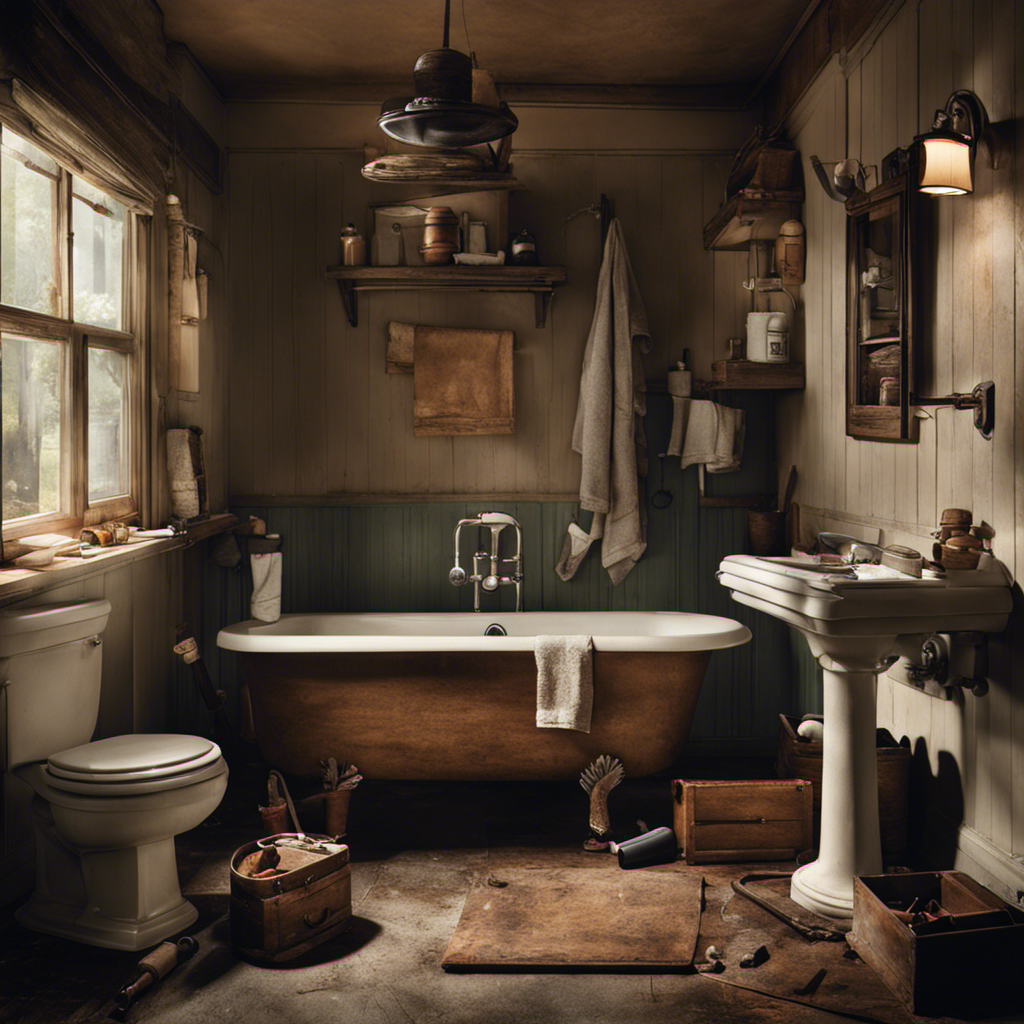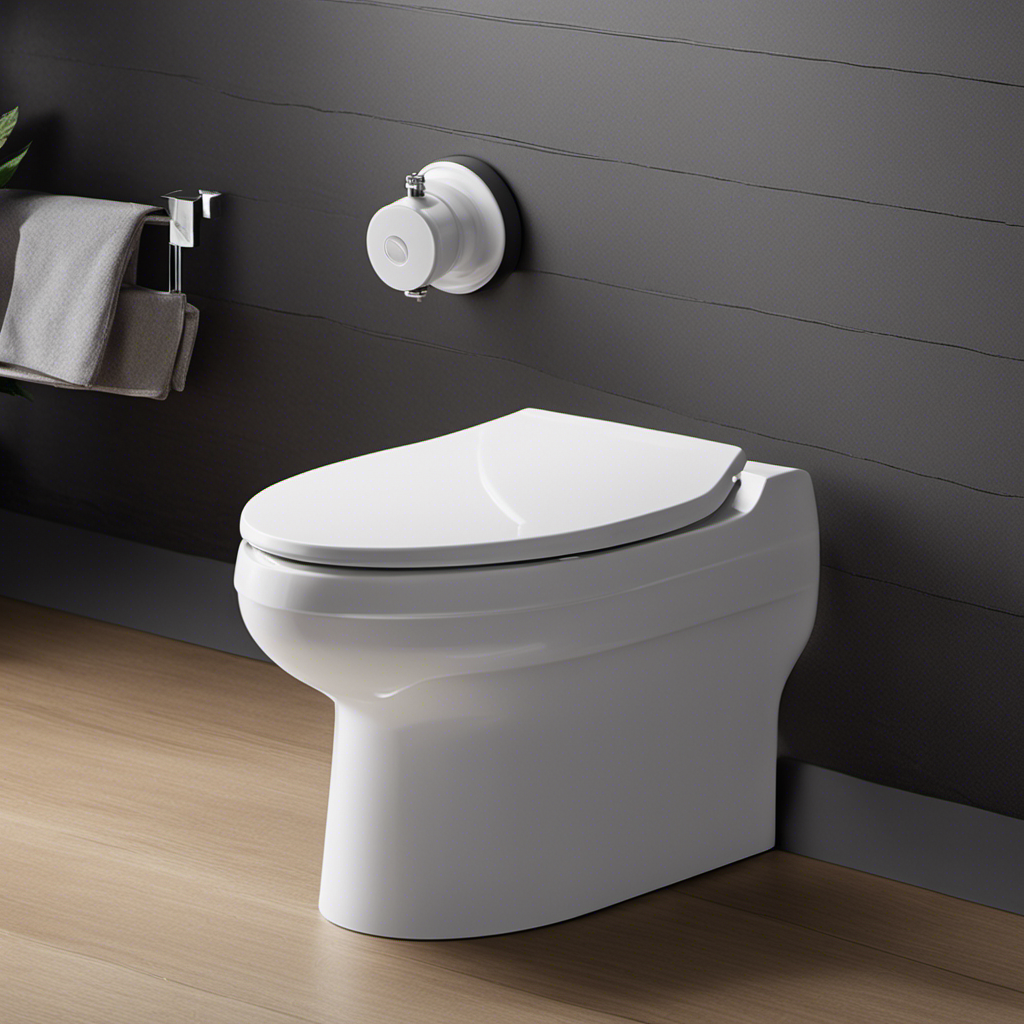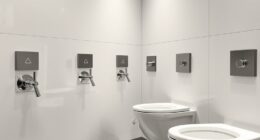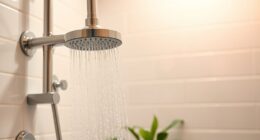Hey there!
Ever had that sinking feeling when you flush the toilet and it starts to clog? Trust me, I’ve been there too. But fear not, because I’ve got your back.
In this article, I’m going to share with you some practical and detailed steps on what to do when your toilet is clogged. From assessing the severity of the clog to using tools like a plunger or a toilet auger, we’ll cover it all.
So let’s dive in and get that toilet back to its glorious, flushable state!
Key Takeaways
- Use a plunger to determine the severity of the clog by creating suction and assessing if the water drains or remains stagnant.
- Gather necessary tools such as a plunger, toilet auger, rubber gloves, and a bucket to effectively tackle any toilet clog.
- The plunger is a simple and effective tool for unclogging a toilet, but if it doesn’t work, consider using a toilet auger or snake specifically designed for this purpose.
- Chemical drain cleaners can be convenient but may have risks and harm the environment, so consider following instructions carefully or opt for natural remedies like vinegar, baking soda, or the hot water method.
Assess the Severity of the Clog
Before you panic, try to determine the severity of the clog by using a plunger. This will help you understand if it’s a minor or major clog.
To assess clog severity, start by positioning the plunger over the drain hole and creating a tight seal. Then, gently push and pull the plunger to create suction and dislodge the blockage. If the water starts to drain, the clog is likely minor. However, if the water remains stagnant or drains slowly, it indicates a more severe clog.
In such cases, you may need to use a plumbing snake or call a professional plumber for assistance.
To prevent future clogs, remember to dispose of toilet paper properly, avoid flushing non-flushable items, and regularly clean the toilet to remove any buildup.
Gather Necessary Tools and Supplies
First, you’ll need to grab the necessary tools and supplies to address the issue. When faced with a clogged toilet, having the right tools can make all the difference.
There are a few essential items you should have on hand for unclogging a toilet effectively. The first tool you’ll need is a plunger, which is a tried and true method for dislodging a clog. Make sure you have a sturdy plunger with a rubber suction cup that can create a tight seal around the drain.
Additionally, a toilet auger can be a useful tool for tackling stubborn clogs. This long, flexible cable is designed to reach deep into the pipe and break up the blockage.
Lastly, it’s a good idea to have a pair of rubber gloves and a bucket nearby to catch any water that may overflow during the unclogging process.
Armed with these essential tools, you’ll be well-prepared to tackle any toilet clog.
Try Using a Plunger
Using a plunger is a simple and effective method to unclog a toilet. To begin, ensure that the plunger is in good condition by checking the rubber suction cup for any cracks or tears. If necessary, replace the plunger to ensure optimal performance.
To use the plunger, place it over the drain hole in the toilet bowl and push down gently, creating a tight seal. Then, rapidly push and pull the plunger to create suction and dislodge the clog. Be persistent and repeat the process several times if needed.
If the plunger method does not work, there are alternative unclogging methods such as using a toilet auger or snake. These tools can help reach deeper clogs and provide a more thorough unclogging solution.
Use a Toilet Auger or Snake
If the plunger doesn’t work, you can try using a toilet auger or snake. These tools are specifically designed for unclogging toilets and can be a great alternative to a plunger. A toilet auger, also known as a closet auger, is a long, flexible cable with a sharp, coiled end. It is inserted into the toilet drain and rotated to break up the clog. On the other hand, a toilet snake is a longer and thicker version of the auger. It works in a similar way but is more effective for tougher clogs.
| Toilet Auger | Toilet Snake |
|---|---|
| Flexible | Longer |
| Coiled end | Thicker |
| Effective | Tough clogs |
Using a toilet auger or snake has several benefits. First, they can reach deeper into the drain pipe, ensuring that the clog is completely removed. Second, they are less likely to splash water around compared to plunging. Lastly, they are reusable and can be easily cleaned after use. So, if the plunger fails, don’t hesitate to give a toilet auger or snake a try.
Consider Using a Chemical Drain Cleaner
You might want to consider a chemical drain cleaner to help with the clog. Chemical drain cleaners are a popular option for unclogging toilets and other drains. They are easy to use and can be effective in breaking down the clog and clearing the pipe.
One of the pros of using a chemical drain cleaner is convenience. They are readily available at most stores and can be used at any time. Another advantage is that they can work quickly, clearing the clog in just a matter of minutes.
However, it’s important to be aware of the cons as well. Chemical drain cleaners can be harmful to the environment and may damage pipes if used incorrectly. Additionally, some cleaners may not work on certain types of clogs.
It’s important to carefully read and follow the instructions and consider the potential risks before using a chemical drain cleaner.
Use Natural Remedies to Unclog the Toilet
When faced with a clogged toilet, there are several natural remedies that can help you unclog it without the need for chemical drain cleaners.
One effective method is using a combination of vinegar and baking soda. Simply pour one cup of baking soda into the toilet bowl, followed by two cups of vinegar.
Another option is the hot water method, where you pour a bucket of hot water into the toilet bowl and let it sit for a few minutes before flushing.
Vinegar and Baking Soda
Using a mixture of vinegar and baking soda can help unclog a toilet. Vinegar has many benefits, including its natural disinfectant properties and ability to break down mineral deposits. Baking soda, on the other hand, is known for its versatility and uses in cleaning and deodorizing. When combined, these two ingredients create a powerful fizzing reaction that can help loosen and dissolve clogs in the toilet drain.
To use this method, start by pouring one cup of vinegar into the toilet bowl, making sure to cover the entire surface. Then, add one cup of baking soda and let it sit for a few minutes to allow the fizzing action to occur. Finally, flush the toilet and repeat if necessary. This natural remedy is effective and environmentally friendly.
Transitioning into the subsequent section, another method to consider is the hot water method.
Hot Water Method
To unclog a toilet, pour a pot of hot water into the bowl. This method is one of the most effective ways to clear a clogged toilet.
If you don’t have hot water readily available, there are a few alternatives you can try. First, you can use boiling water from a kettle or even a large pot on the stove. Just make sure to handle it with caution to avoid burns.
Another option is to use hot tap water, as long as it is not scalding hot. The key is to pour the water from a height to create pressure and force the clog to break up.
However, it’s important to remember that prevention is always better than dealing with a clogged toilet. To prevent toilet clogs, avoid flushing excessive toilet paper or any items that are not intended to be flushed.
Regular maintenance, such as using a plunger or a toilet snake, can also help keep your toilet clog-free.
Plunger Techniques
One effective way to clear a clog is by using a plunger. However, if you don’t have a plunger on hand or prefer to try alternative methods, there are a few things you can do to unclog your toilet without tools. Here are some plunger alternatives and unclogging techniques that might help:
| Technique | Steps |
|---|---|
| Hot Water | Pour a bucket of hot water into the toilet bowl from waist height. Let it sit for a few minutes and then flush. Repeat if necessary. |
| Dish Soap | Squirt a generous amount of dish soap into the toilet bowl. Let it sit for about 15 minutes. Then, pour a bucket of hot water into the bowl and flush. |
| Vinegar and Baking Soda | Mix equal parts vinegar and baking soda in a cup. Pour the mixture into the toilet bowl and let it sit for 30 minutes. Flush afterwards. |
| Wire Hanger | Straighten a wire hanger and create a small hook at one end. Insert the hooked end into the toilet drain and gently push and twist to dislodge the clog. |
When to Call a Professional Plumber
If the toilet is still clogged after attempting DIY methods, it’s best to call a professional plumber. While most clogs can be cleared using simple techniques like plunging or using a toilet auger, there are times when the problem may be more serious and require professional assistance.
Here are some signs that indicate it’s time to call in the experts:
- The clog persists despite multiple attempts to unclog it.
- The water level in the toilet bowl is consistently rising or not going down.
- There is a foul odor coming from the toilet.
- Multiple drains in your home are experiencing issues.
- You suspect a larger issue with your plumbing system.
Frequently Asked Questions
How Long Does It Usually Take for a Plunger to Unclog a Toilet?
Using a plunger is an effective way to unclog a toilet, but the time it takes can vary. Pouring hot water down the toilet bowl can also help. There may be faster methods available, such as using a toilet auger.
Can a Chemical Drain Cleaner Damage the Pipes?
Using chemical drain cleaners can cause pipe corrosion over time. It’s best to avoid them and opt for alternative methods like using a plunger or a toilet auger. If your toilet is connected to a septic system, consult a professional before using a plunger.
Are There Any Natural Remedies That Are Safe to Use if the Toilet Is Connected to a Septic System?
When dealing with a clogged toilet in a septic system, it’s important to know that there are natural remedies available. However, it’s crucial to avoid common mistakes that could further damage the system.
Should I Wear Gloves or Protective Gear When Using a Toilet Auger or Snake?
When using a toilet auger or snake, it’s important to prioritize safety. I always wear gloves and protective gear to prevent any potential contamination or injuries. It’s better to be safe than sorry!
What Are the Signs That Indicate the Clog May Be More Severe and Require Professional Help?
If you notice water backing up, multiple fixtures clogging, or foul odors, it could be signs of a severe toilet clog. It’s best to seek professional help in such cases. However, you can try alternative methods before calling them.
Conclusion
So there you have it, a step-by-step guide on what to do when your toilet is clogged. From assessing the severity of the clog to using various tools and techniques, we’ve covered it all.
But remember, sometimes even our best efforts may not be enough. So, if all else fails and you’re still left with a stubborn clog, it might be time to call in the professionals. They have the expertise and equipment to tackle even the toughest clogs.
Don’t let a clogged toilet ruin your day, take action and get it fixed!










